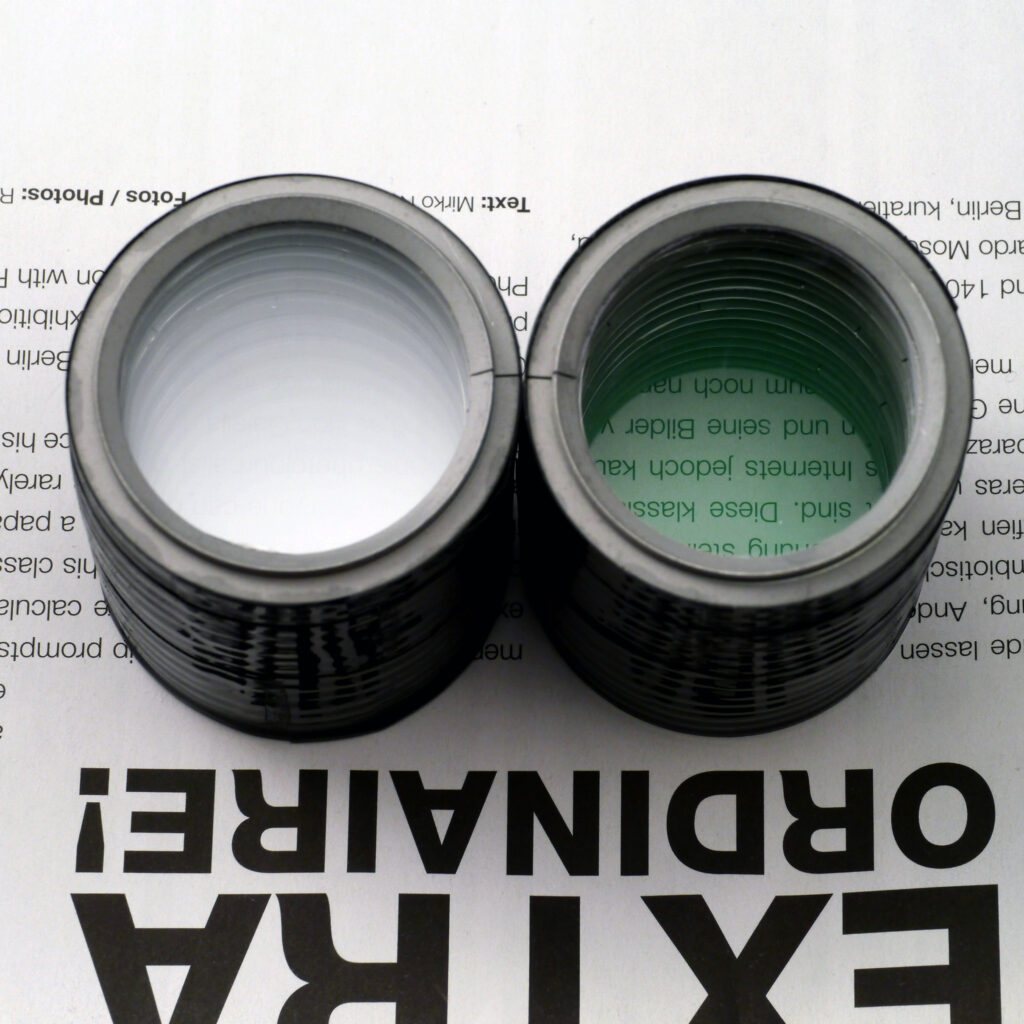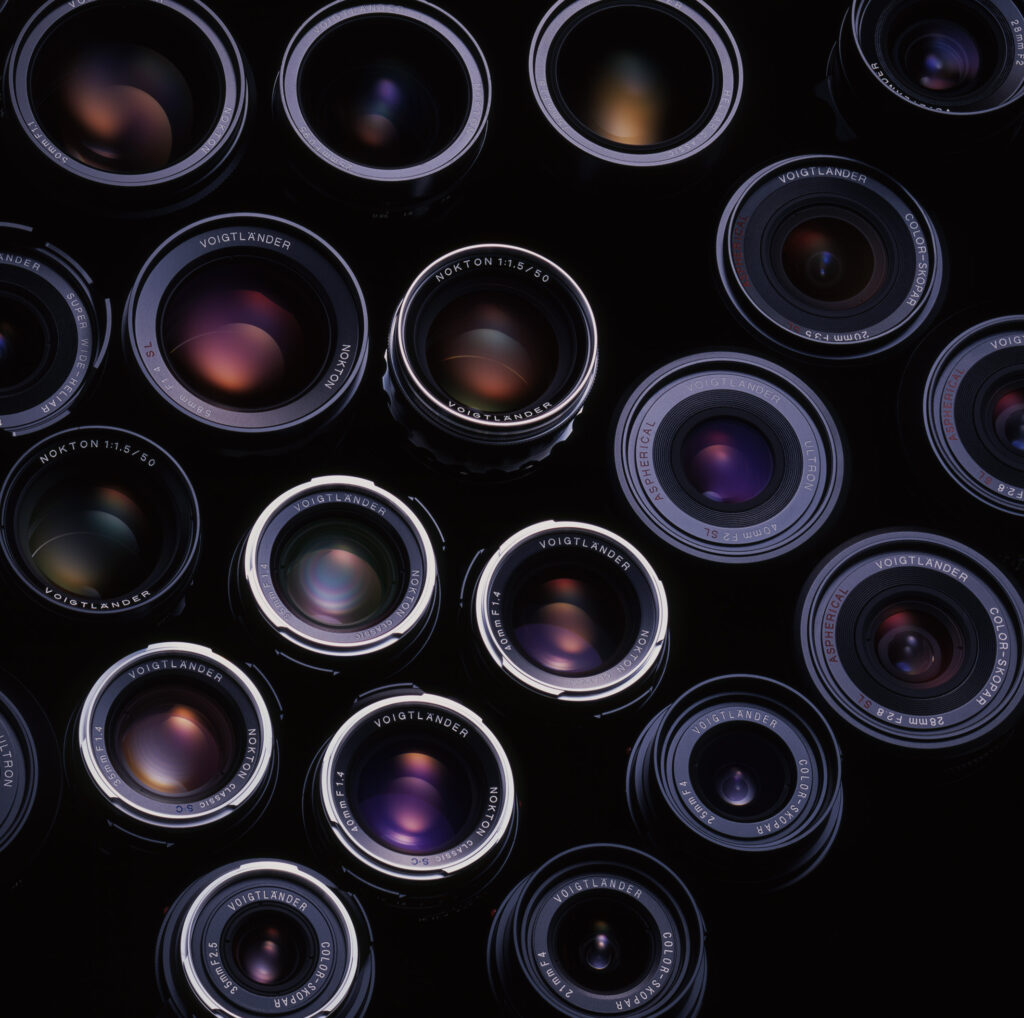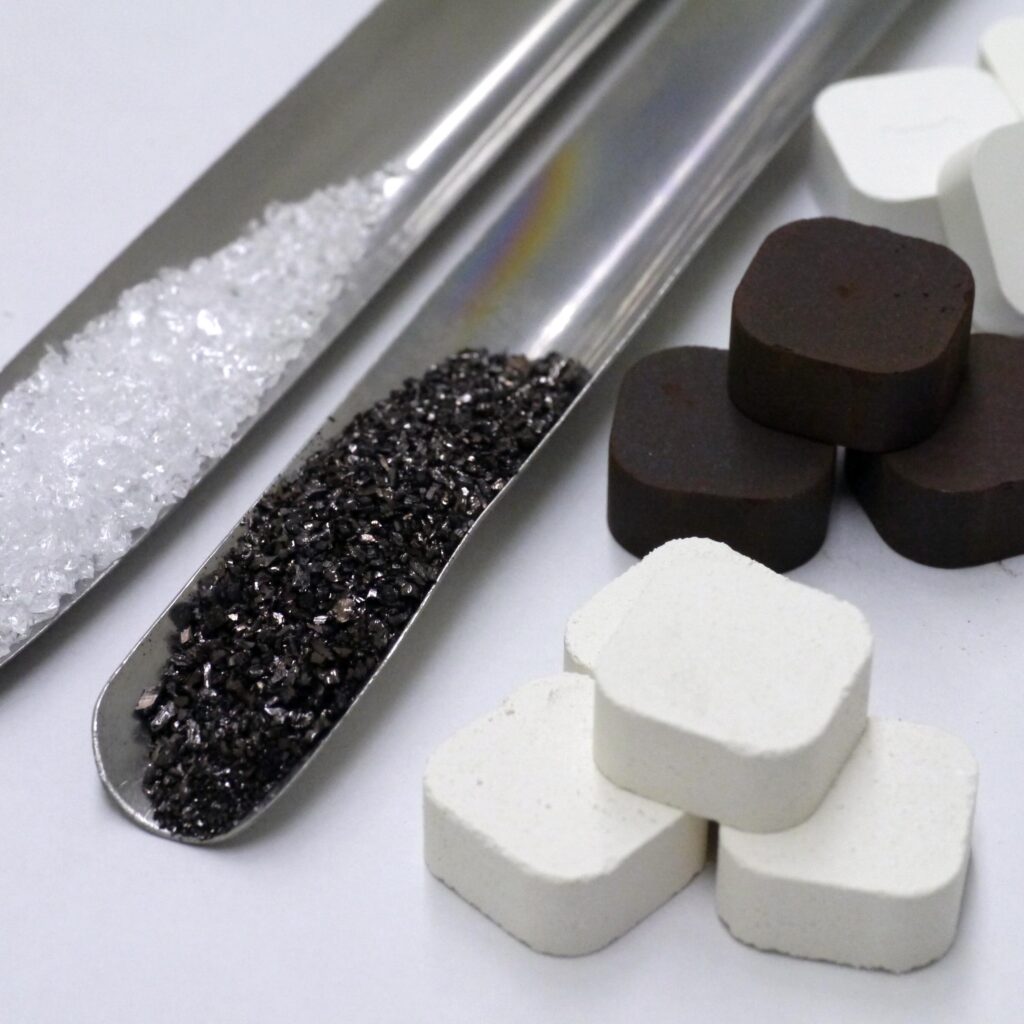Air, glass, and antireflection coatings

The above photograph is of a character readability check that is done by placing several glasses over printed material. Transparent optical glasses are on the left, while antireflection coating has been applied to the glasses on the right. General optical glass reflects about 4% of the incoming light off its surface, and loses 8% of the incoming light on both sides of the glass. For example, lenses that are composed of 6 lens elements in 5 groups have 10 optical surfaces. So, if the transmittance at each surface is 96%, the transmittance of the light diminishes to 66.5% after passing through 10 surfaces. Actually, more than one-third of the light reflects off at the surfaces of the glass. The light, which is supposed to be composed as an image onto films and imaging devices, repeatedly reflects inside the lens barrel causing phenomena known as “flares” and “ghosts” that have adverse effects on imaging performance. An antireflection coating serves a purpose of minimizing such phenomena.

An antireflection coating minimizes the reflectance of light off the glass surface by forming a transparent thin film such as MgF2 (magnesium fluoride) on the surface of the glass. A series of thin films of lower refractive indexes than the host glass can minimize the reflection of light of certain wavelengths by appropriately adjusting their thicknesses. Visible light that constitutes a photo, namely actual light, does not have only one wavelength. So, to prevent the reflection of various wavelengths, it is necessary to skillfully combine several layers of thin films of different refractive indexes and thicknesses. This processing technology intended to reduce light reflection across a wide range of wavelengths from red to purple is called “multi-coating.”

The high-end interchangeable lenses we manufacture offer a unique grade of expression. It is because the layers of optimized coating are applied to the lenses according to the refractive index of the optical glass and the configuration of the lens system. Making the thickness of thin films one-fourth of the wavelength of light is the basic principle of an antireflection coating. One material that controls this “interference of light” is MgF2 (magnesium fluoride), but there are numerous other materials such as Al2O3 (alumina) and ZrO2 (zirconia). Nano-order control of film thickness that takes into account the combination and order of materials is crucial for achieving the best optical performance.